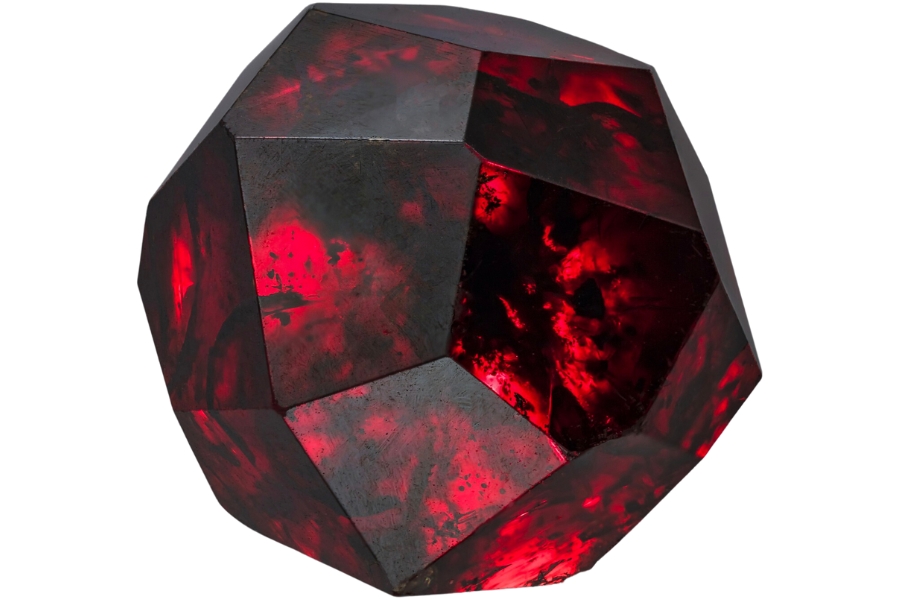Garnet is often mixed up with other minerals, both natural and man-made. In this article, we’re going to dive into the world of this gem, explore what makes it unique, and provide you with easy-to-follow tips on how to identify real garnet.
But first, you must know that garnet is not just one mineral but a group of several closely related minerals. Its most common type, the one most people think of, is the deep red one.
Throughout the article, we’ll guide you through the key features of this gem so you’ll know how to tell if a garnet is real. Some of these are its hardness, its color range, and how it’s different from other similar-looking stones. We’ll also discuss simple tests you can do to check if your garnet is real.
By the end of this article, you won’t need to be a gem expert to tell a real garnet from a fake one. Let’s get started!
Overview Of Natural Garnet And Why Fakes Are Common
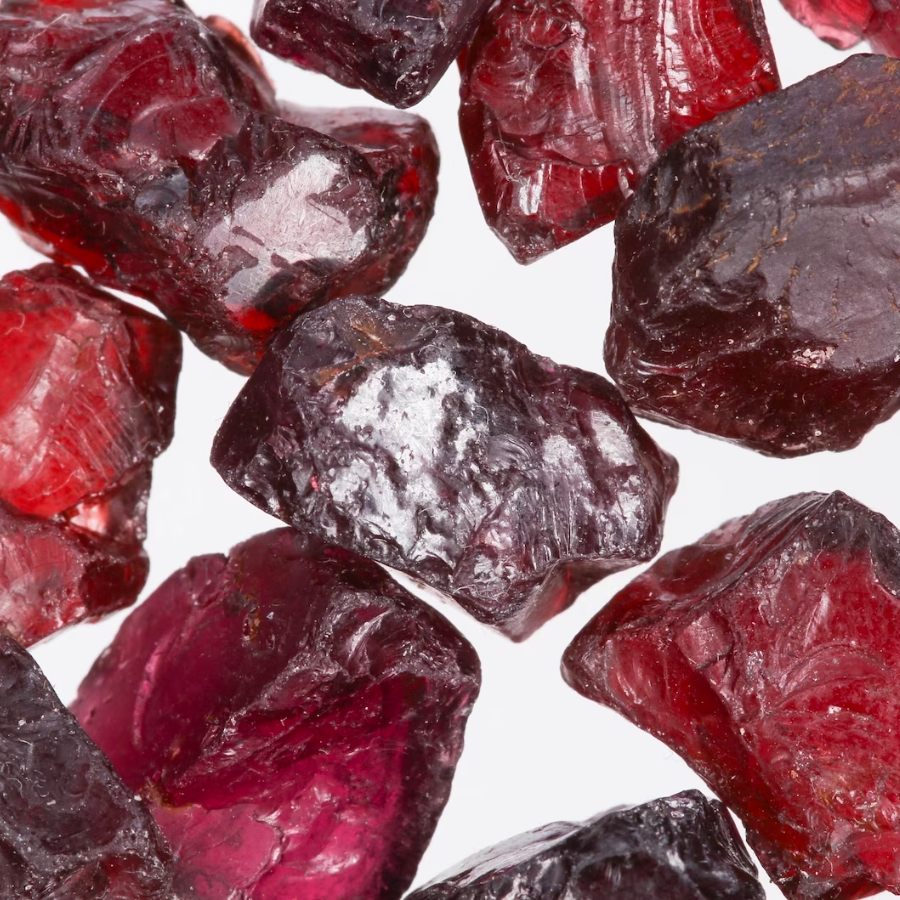
Garnets, being a group of several related minerals, come in different colors and properties. They can be red, orange, yellow, green, purple, brown, black, and even colorless. But the most well-known garnet is the classic deep red.
This gem is formed deep within the Earth under high pressure and temperature. It can also be found in rocks formed from volcanoes and even in some types of metamorphic rocks.
What’s interesting is that it can even form in rocks that have been altered by intense heat and pressure from things like mountain building.
The value of garnet is influenced by its popularity in jewelry, not just because it’s pretty, but also because it’s quite durable and can handle daily wear. Besides jewelry, it’s often used as an abrasive in sandpapers and in waterjet cutting because it’s so hard and can cut through materials like metal and plastic.
Its beauty and color diversity also make it a favorite among gem lovers. Its durability means it can last a long time, even with everyday use. Plus, certain types of garnets are rare, which can make them more valuable.
Why you’re seeing more fake garnet these days
Recently, there’s been an increase in fake garnets in the market. This is happening for a few reasons.
First, real garnets are quite popular because of their beauty and range of colors. Because they’re in demand, some people try to make money by selling fake garnets that look like the real thing.
There are two main types of fake garnets. One is natural minerals that are sold as if they are garnets. These stones might look similar to it in color but they’re different in other ways, like how hard they are or how they shine.
The second type is man-made fakes. These are made in labs and are designed to look like garnets. They can be pretty convincing because they copy the color and appearance of real ones very well.
Technology has gotten better, so it’s easier to make fake garnets that look real. Also, as more people want this gem, the price for real ones goes up. When this happens, some people try to cheat by selling fakes for a high price.
How To Identify Real Garnet
Learning how to identify your rock is the first step in making sure you don’t make the mistake of purchasing a fake garnet for the price of a real one. Below are some simple observations and tests you can do:
Check its color
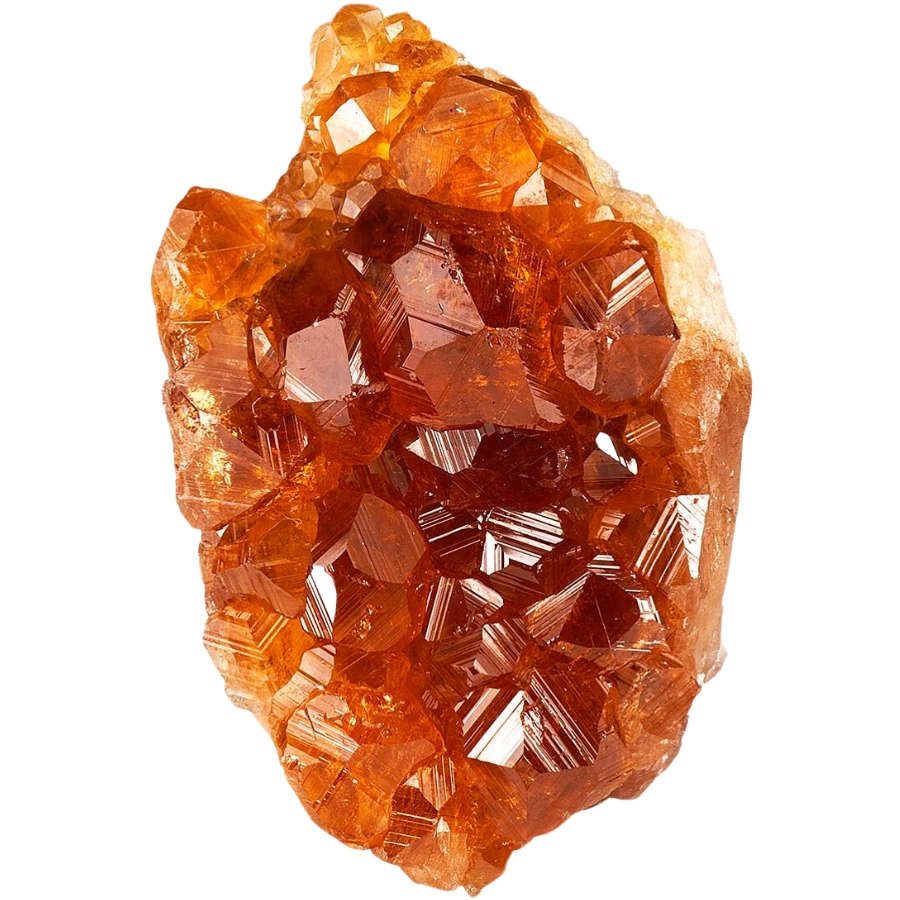
Checking the color of a garnet is a helpful way to figure out if it’s real. Genuine ones are known for their deep, rich colors. They can be various shades of red, from dark blood red to vibrant shades, and sometimes even green, orange, or other colors.
The key is that their colors look natural and not overly bright or artificial. If a garnet’s color seems too perfect, like it’s been painted on or it’s super bright, it might not be real.
Also, real garnets often have a neat trick where their color changes slightly under different types of light. This change is subtle, but it’s a good sign of a real garnet. Fake garnets, especially those made of glass or plastic, usually have a consistent color that doesn’t change much in different lights.
Do a scratch test
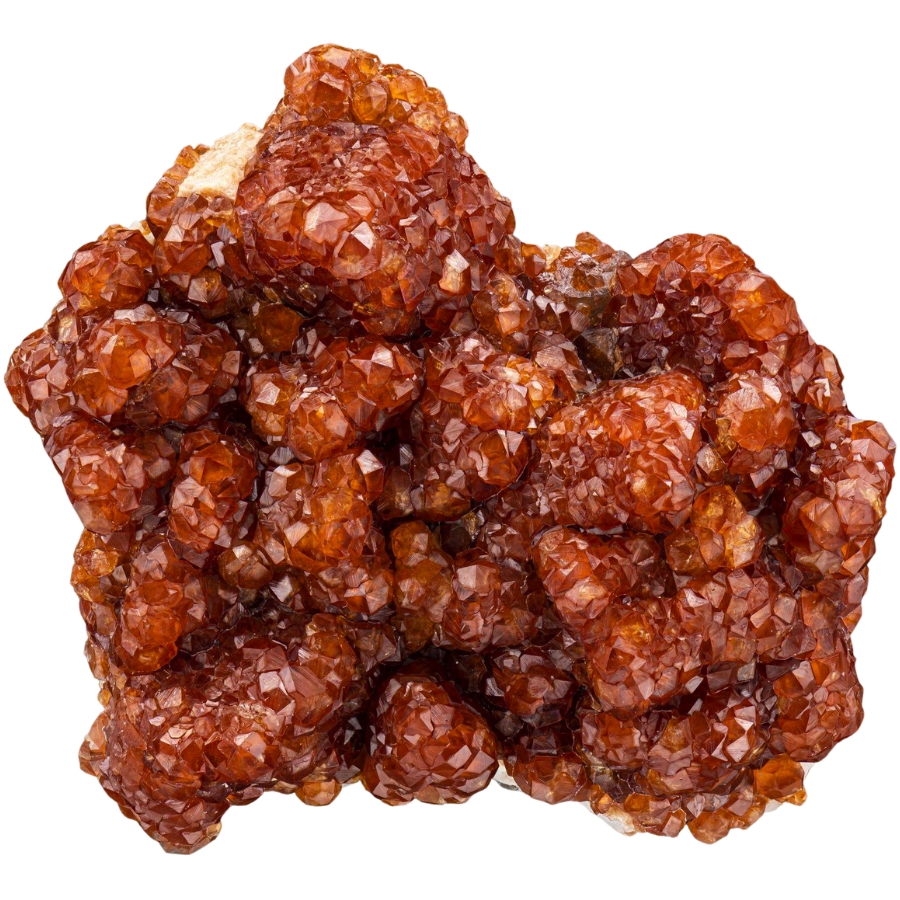
The scratch test is another simple way to check if a garnet is real. This gemstone is pretty hard, scoring about 6.5 to 7.5 on the Mohs Scale of Hardness. This means it can scratch materials like glass or metal, which are softer.
To do the test, you gently scratch the garnet against a piece of glass or a metal surface. If it leaves a scratch mark, it’s a good sign that it’s real because it’s hard enough to scratch these surfaces.
But, if the garnet gets scratched or doesn’t leave any mark, it might be a fake, maybe made of something softer like plastic or glass. Remember to be gentle, though. You don’t want to damage the garnet or the surface you’re testing it on.
Observe its transparency

Transparency means how much you can see through a stone. Real garnets usually have a certain level of transparency: they’re not completely clear like glass, but you can still see through them a bit.
They have this nice balance where they let some light pass through but not all of it. If the specimen is too transparent, like perfectly clear window glass, it might be a fake.
On the other hand, if it’s completely opaque and you can’t see through it at all, that’s also a clue it might not be real. Genuine garnets will often show some light and color when held up to a light source, but won’t be as clear as glass.
Feel its weight

Garnets are pretty dense, which means they feel heavier than they look. When you pick it up, it should feel a bit heavier than other stones of the same size.
If you have a garnet and another stone that’s about the same size, you can try holding them one in each hand to compare how heavy they feel. If the garnet feels noticeably heavier, that’s a good sign it might be real.
On the other hand, if it feels light or just like any other stone, it could be a fake. Fake garnets, especially those made from glass or plastic, are usually not as dense and don’t have that same heavy feeling.
The Different Types Of Fake Garnet And What They Look Like
It’s helpful to know where to find garnets and to familiarize yourself with the types of fake garnets out there if you want to avoid being duped. In this section, we’ll discuss what these fake garnets are so you can see just how similar and different they can get from the real deal:
Glass imitation
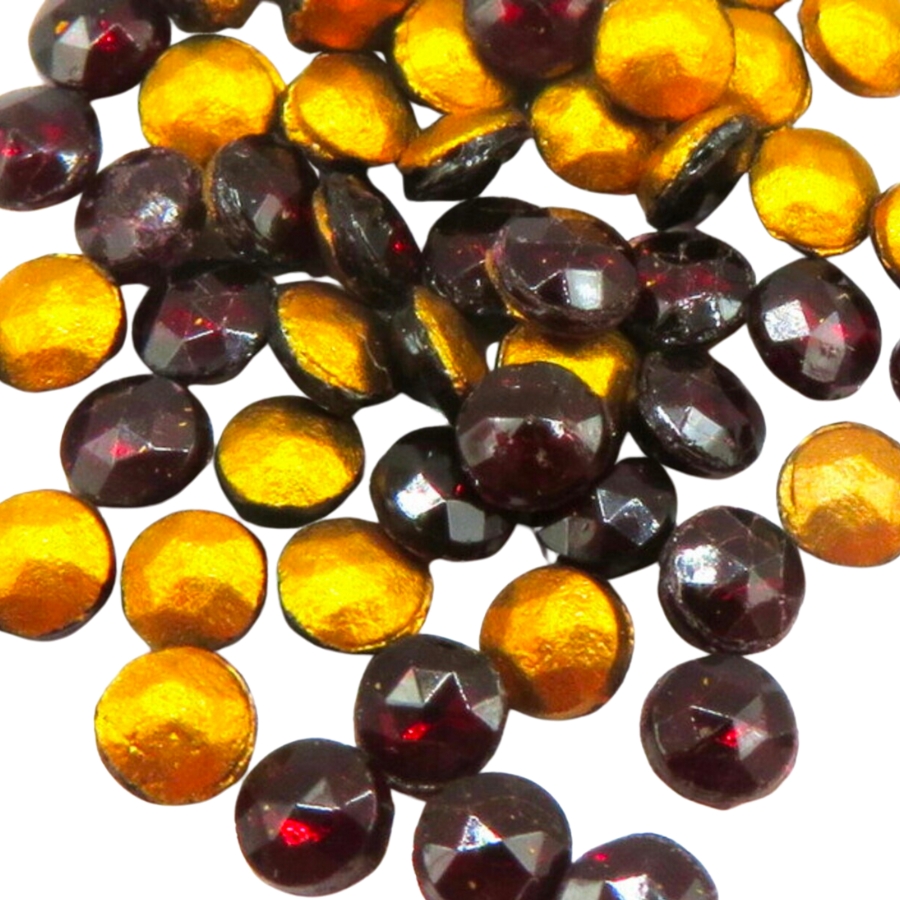
Glass imitations of real garnet are created in a pretty interesting way. First, manufacturers choose a type of glass that can be colored to match its rich reds and other hues.
This glass is made from a mix of materials like silica, which is sand, and other elements that help it melt and mix well.
Once they have the right kind of glass, they add special dyes or chemicals to it. These dyes give the glass the deep, vivid colors we see in real garnets. The glass is then melted in a furnace at very high temperatures.
Then this is shaped into gemstone forms. This shaping can be done by pouring the molten glass into molds that look like garnet crystals or by cutting and polishing it after it cools down.
After this, they’re polished to make them really shiny, which makes them look more like real garnets, which also have a natural sparkle. These glass imitations can be very convincing because they’re made to closely match the color and shine of real garnets.
How you can identify glass imitation being sold as real garnet
Check for bubbles
Look closely at the stone under good light. If you see tiny bubbles inside, it’s likely a glass imitation. Real garnets don’t have bubbles, but glass often does when it’s made.
Observe the shine
Look at how the stone shines and reflects light. Glass imitations often have a very bright, almost mirror-like shine. Real garnets have a deeper, more subtle shine that’s not as flashy as glass.
Feel the weight
Hold the stone in your hand and see how heavy it feels. Glass imitations are usually lighter. Real garnets have a noticeable weight to them because they’re denser.
Red-Dyed Quartz
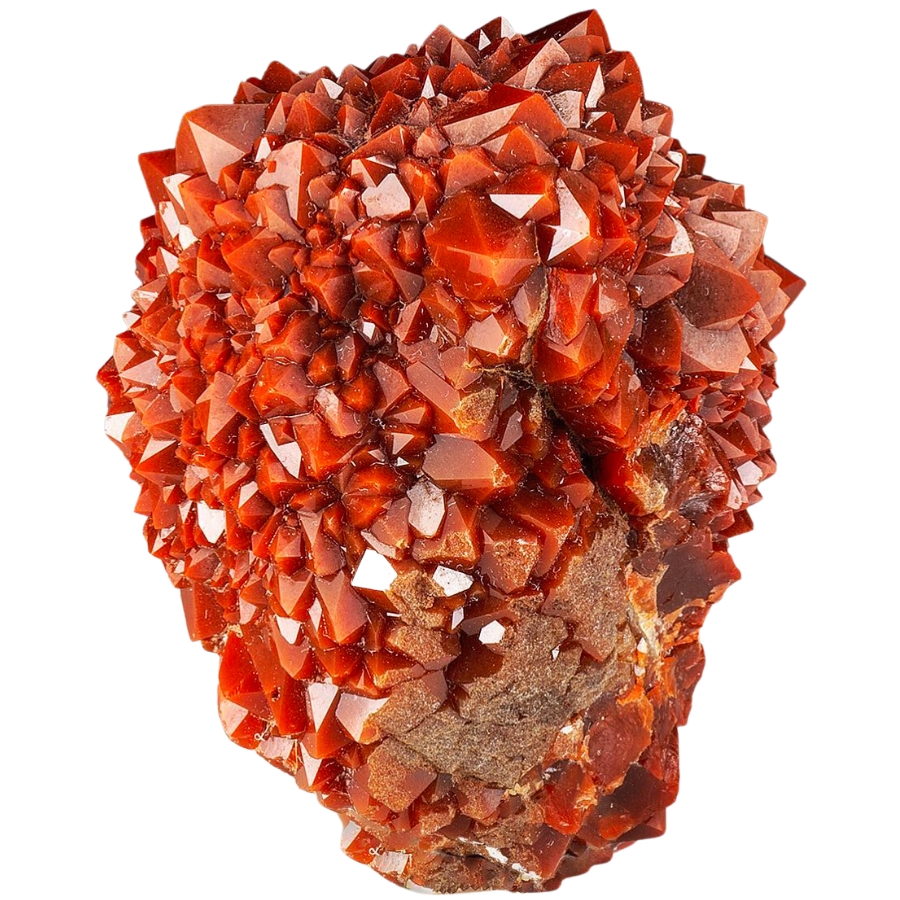
Red-dyed quartz is made by taking regular quartz and changing its color. Quartz is a common mineral that’s found in many places around the world. It’s usually clear or has a light color, but it can be turned red to look like garnet.
Here’s how they do it: First, they take clear or lightly colored quartz. It’s treated with a special dye that’s designed to soak into it and change its color to a deep red, similar to the color of real garnets.
This dyeing process can happen in different ways. Sometimes, the quartz is heated up with the dye, which helps the color stick to the quartz better. Other times, the quartz is put into a liquid with the dye and left there for a while so it can absorb the color.
Once the quartz is dyed red, it’s cut and polished to look like a garnet. They shape it into different gemstone forms, like round or oval shapes, and polish it until it shines. It’s often used in jewelry like necklaces, rings, and earrings.
How you can identify red-dyed quartz being sold as real garnet
Look for uneven coloring
Check the stone carefully to see if the color is uniform. Red-dyed quartz often has uneven coloring, with some areas darker or lighter. Real garnets usually have a more consistent and deep color throughout.
Test its hardness
Try to scratch the surface with something like a coin or a small knife. Quartz is softer, so if it scratches easily, it’s likely red-dyed quartz. Real garnet is quite hard and won’t scratch as easily.
Look at the shine
Observe how the stone reflects light. Red-dyed quartz can sometimes have a glassy, shiny surface. Real garnets have a more subtle, deep shine that’s not overly glossy.
Spinel
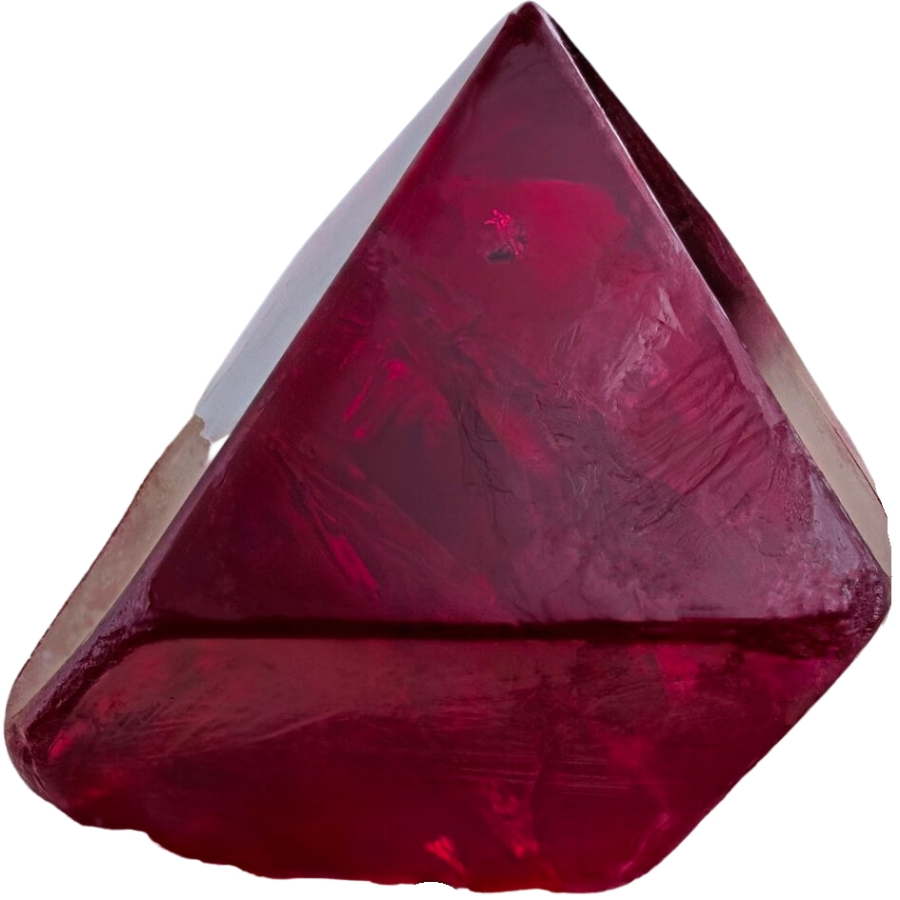
Spinel forms naturally usually in marbles and limestones, which are types of rocks that have been changed by heat and pressure over a long time. These conditions are perfect for creating spinel.
It often forms when these rocks are close to molten rock or magma deep underground. The heat and chemicals from the magma change the marble and limestone and allow it to grow.
Spinel can come in various colors, including red, which is why it’s sometimes confused with garnet, especially for someone who isn’t a gem expert. Because of this similarity, some people sell red spinel as if it’s garnet, which can be misleading.
When spinel is mined, it’s cut and polished just like any other gemstone. This process brings out its color and shine, making it even more like garnet.
Spinel is actually a pretty valuable gemstone on its own. It’s quite hard and durable, which makes it great for jewelry like rings and necklaces. But, because garnet is also popular and well-known, sometimes spinel is sold under the name “garnet” to make it more appealing to people who think they’re getting garnet.
How you can identify spinel being sold as real garnet
Check the color
When sold as garnet, spinel is usually red. However, its red color can sometimes be brighter or more vivid than the deep red of a typical garnet. If the stone’s red color looks really bright, it might be spinel.
Pay attention to its shine
Spinel has a different kind of shine compared to garnet. It’s known for its sparkling, vibrant shine, while garnet has a deeper and more subtle glow. If the stone sparkles a lot in the light, it could be a sign it’s spinel.
Observe the facets and edges
Look closely at the edges and flat-cut surfaces (facets) of the stone. Spinel typically has sharper, more defined edges and facets than garnet. If the edges and facets look really crisp and sharp, it’s more likely to be spinel.
Red Tourmaline
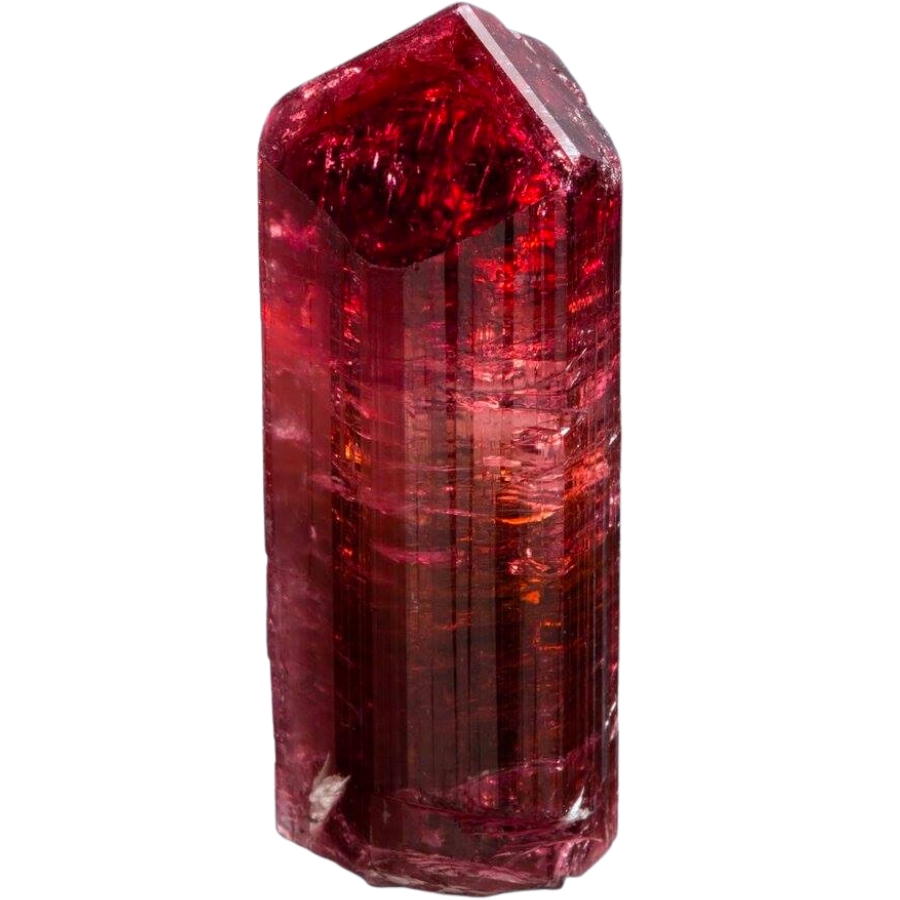
Red tourmaline, also known as rubellite, sometimes gets mistaken for garnet. Found in many places around the world, it grows in rocks that have been changed by heat and pressure. These rocks are usually rich in minerals and water, which helps the tourmaline crystals grow.
This crystal gets its red color from elements like manganese and iron that are in the ground where it forms. The amount and type of these elements can affect how deep or bright the red color is. Sometimes, the red in tourmaline can look a lot like the deep red you see in garnets.
The process of cutting and polishing red tourmaline can make it look even more like garnet. People sometimes sell it as rea garnet because they look closely similar. It also doesn’t help that red tourmaline is used in all kinds of jewelry like its lookalike.
How you can identify red tourmaline being sold as real garnet
Check the color
Red tourmaline or rubellite can have a brighter and sometimes pinkish tone compared to garnet’s deep, rich red. If the stone has a lighter red or pink hue, it might be red tourmaline.
Look at the crystal shape
Tourmaline crystals often have long, slender shapes, while garnet crystals are more rounded or have dodecahedral (12-sided) shapes. If you can see the original crystal shape and it’s long and thin, it’s likely red tourmaline.
Observe it under light
Red tourmalines can show different colors in different lighting, which is called pleochroism. If the stone changes color or shows different shades when you move it around under light, it’s a sign it might be red tourmaline, as garnets typically don’t show this property.
Red Jasper
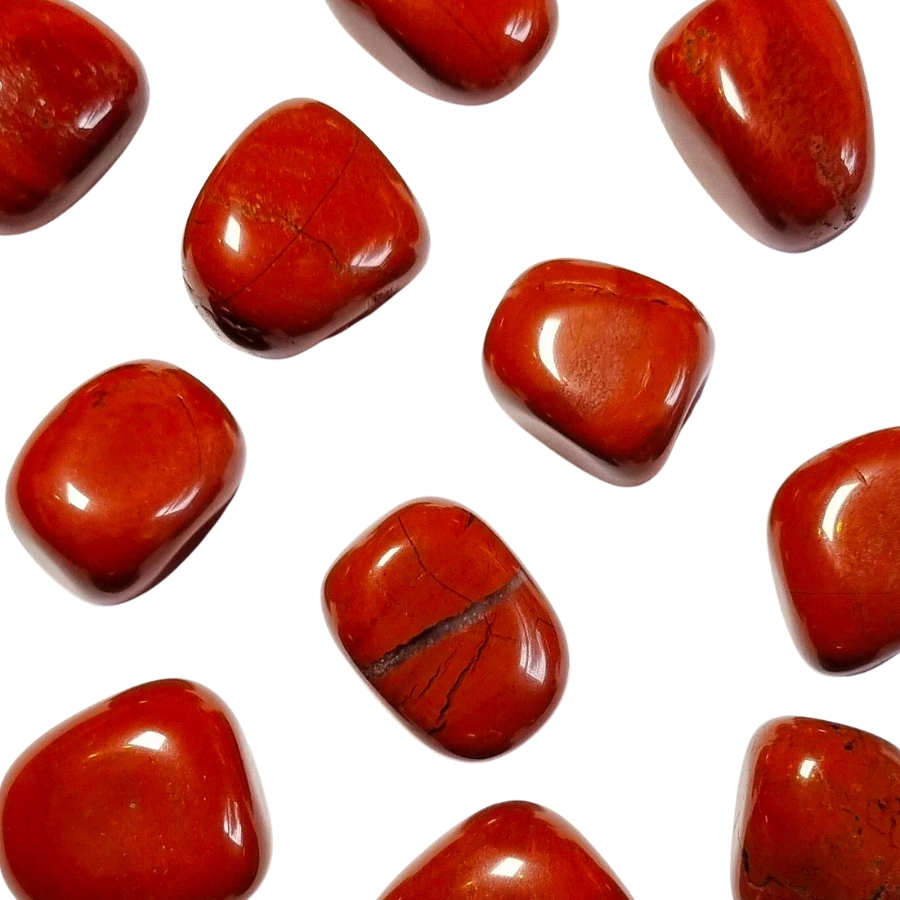
Red jasper is a kind of quartz that gets its red color from iron, which is in the soil and rock where it forms.
Jasper usually forms when silica-rich waters flow through cracks and spaces in rocks, kind of like how a sponge soaks up water. Over time, this silica gets left behind and turns into jasper.
Its red color can be quite pretty, and sometimes it looks similar to the deep red you see in garnets. This is why some people might try to sell red jasper as garnet.
When red jasper is prepared to be sold as garnet, it’s often cut and polished to make it look as pretty as possible. They shape it into beads or other gemstone shapes and polish it until it shines. This shine can make it look more like garnet at first glance.
How you can identify red jasper being sold as real garnet
Look for transparency
Red jasper is usually opaque, which means you can’t see through it. Garnet, on the other hand, is often transparent or semi-transparent. If you can’t see through the stone at all, it’s likely red jasper.
Check the surface
Red jasper often has a smooth, almost waxy look and feel. Garnets are more glassy and have a sharper shine. If the stone’s surface looks very smooth and not glass-like, it might be red jasper.
Observe the color
Although both can be red, red jasper’s color is usually more consistent and can have a duller, earthy tone. Garnets often have a deeper, more vibrant red. If the red color looks flat and not very deep, it’s probably red jasper.
How To Tell If Garnet Is Real Vs Fake
Aside from getting to know the most common types of fake garnets, it’s also essential to be aware of how you can identify fake garnets, be it cut and polished or in its raw form.
How to identify fake garnet when it’s cut or polished
When a fake garnet is cut and polished, it can be a bit harder to tell from a real one. But it’s not impossible! Here are a few characteristics of fakes that you can look out for:
Presence of bubbles

Real garnet, formed naturally, doesn’t have bubbles in it. But fake garnets, especially those made of glass, often do have bubbles.
When glass is made, it’s melted and during this process, tiny air bubbles can get trapped inside. These bubbles are really small, like tiny dots or circles that you can see inside the glass. Sometimes they’re so small you might need a magnifying glass to see them clearly.
On the other hand, real garnet is created over millions of years under high pressure and heat inside the Earth. This long and intense process doesn’t leave room for air bubbles to form inside it.
That’s why if you see bubbles in a stone that’s supposed to be garnet, it’s a big hint that the stone might actually be made of glass.
Bright colors
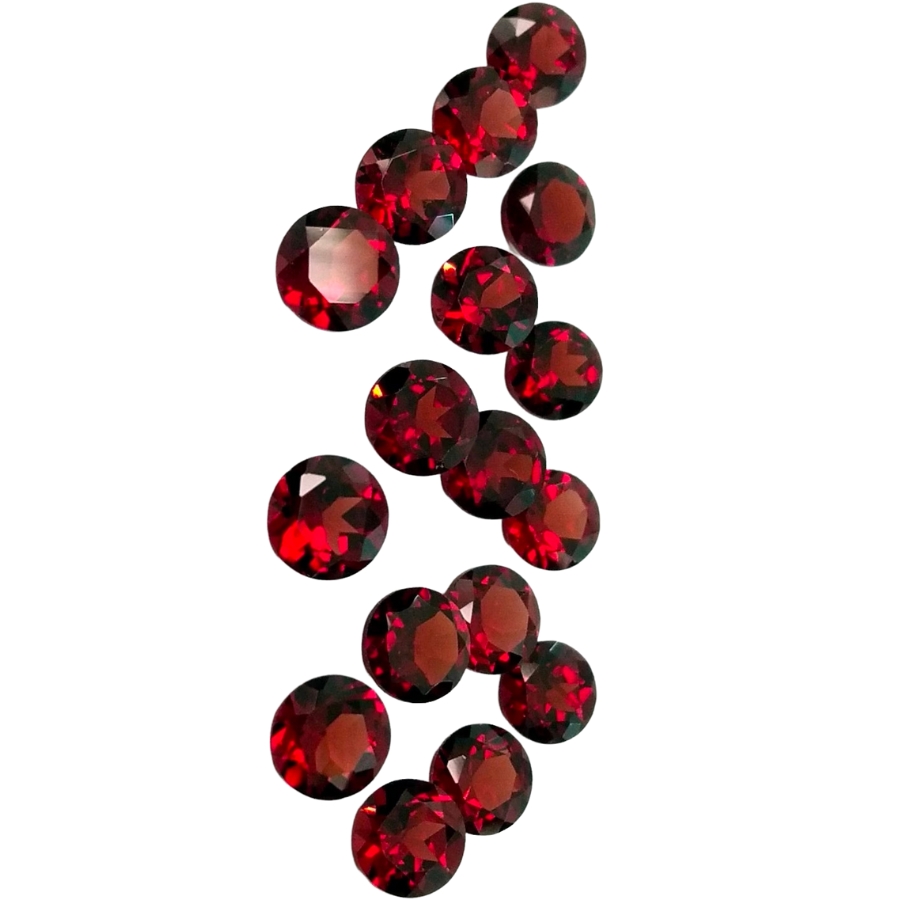
Real garnets have colors with a certain look that’s different from fakes. They can be deep red, like a pomegranate, but they also come in other colors like green, orange, and even purple.
The key thing about these colors is they’re deep and rich, but not super bright or flashy. They have a kind of natural, earthy look to them.
But fake garnets, especially those made of glass, can have really bright, almost cartoonish colors. They’re often made to catch your eye and look super shiny and colorful.
But if you compare them to real garnets, these fakes can look too perfect and unnaturally bright. Their color might look like it’s painted on or just too vibrant and consistent.
Consistent colors under different lights
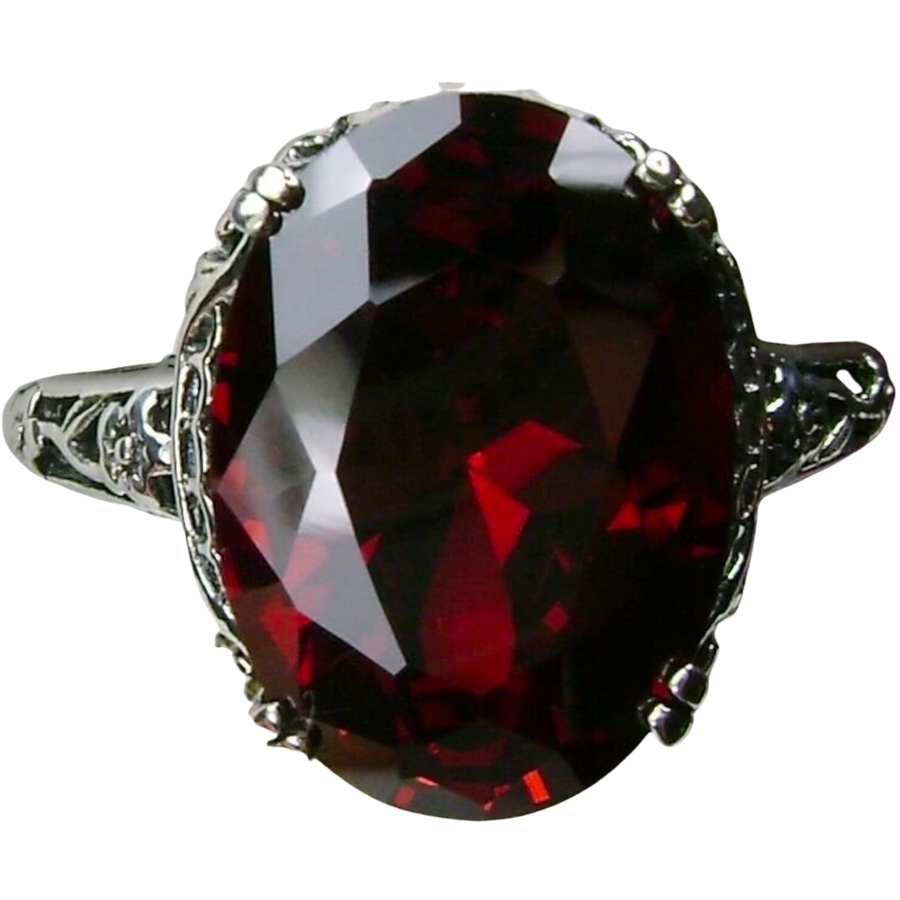
Real garnets have a cool feature where their color can change slightly depending on the light they’re in. This change isn’t super dramatic, but it’s definitely noticeable.
For example, a garnet might look a deep red in sunlight, but in indoor lighting, it could have a more purplish or brownish tint. This subtle shift in color happens because of how its crystal structure interacts with light.
But for fake garnets, this isn’t the case. They often have a very consistent color, no matter what kind of light they’re under. They might look the same bright red in sunlight, indoor light, and even under a flashlight.
So, when you’re examining a garnet, try looking at it under different lighting. Move from sunlight to indoor light, or shine a flashlight on it. Watch how the color changes or stays the same.
How to identify fake garnet when it’s raw
You might think identifying fake garnet is the same whether it’s cut and polished or raw. But it turns out, you can look for different signs to help you tell a raw garnet is fake, such as:
Too perfect
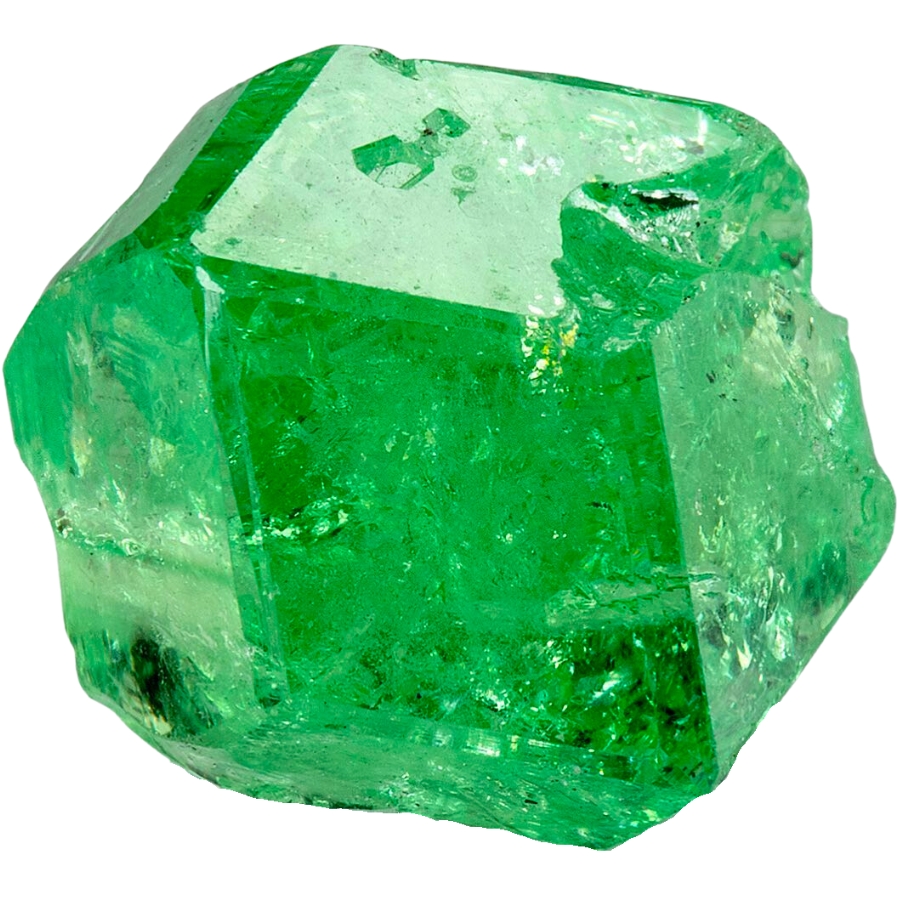
When you’re looking at a raw and uncut garnet, sometimes if it looks too perfect, it might actually be a sign that it’s fake. Like many things in nature, real garnets aren’t perfect. Their formation process makes each garnet unique with its own little quirks.
Real garnets often have some imperfections. They might have uneven surfaces, small chips, or even little inclusions. These imperfections show that it has been formed naturally.
On the other hand, if a raw and uncut garnet looks too perfect, like it has a super smooth surface with no marks or chips, or if it’s shaped too evenly, it might not be real.
Fake garnets can be made to look perfect, but nature’s creations usually have some imperfections.
Reflective surface
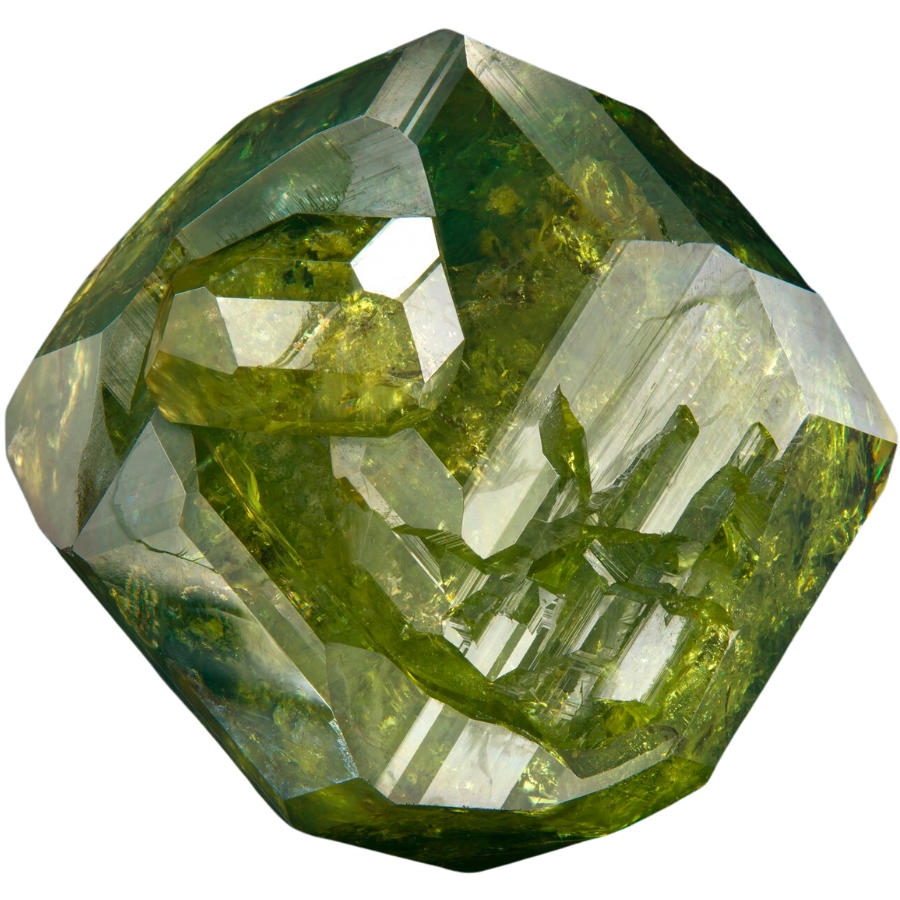
Real garnets usually don’t have a super shiny surface. They tend to have a more dull or matte finish because they’ve been in the ground, sometimes for millions of years. This means they can get a bit roughed up and won’t look super polished.
But, if you find a raw garnet that has a very shiny, reflective surface, like it’s almost sparkling or looks like a mirror, this might be a hint that it’s not real.
Fake garnets can be made to look really shiny to make them seem more attractive. They might be treated or even coated with something to give them that sparkle.
Nature’s garnets usually don’t come out of the ground looking like they’re ready for a jewelry store. They have a more natural, less shiny look to them.
Easily damaged or scratched
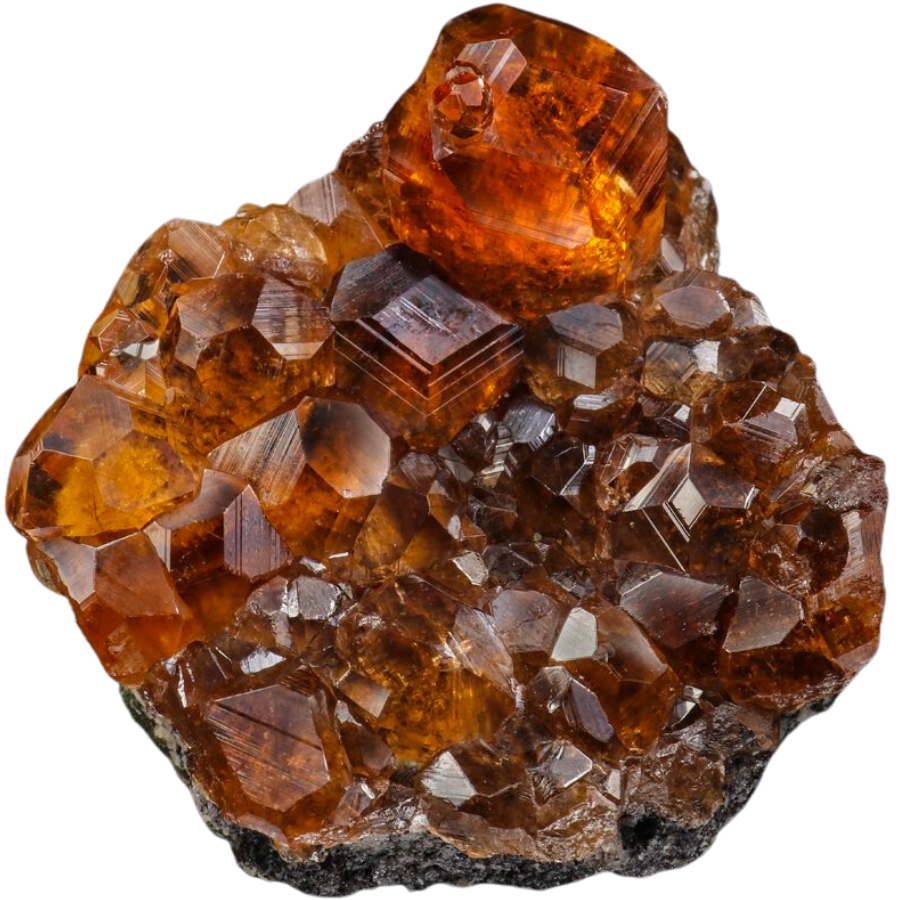
Garnet is hard enough to scratch things like glass or metal. This means if you gently try to scratch a piece of glass with a raw garnet, it should be able to leave a mark on the glass without getting damaged.
But if the garnet is a fake, it won’t be as hard. If you try the scratch test with it, you might find that it either doesn’t scratch the glass at all, or the garnet itself gets scratched or damaged. This is a big clue that it’s not a real one.
So, when you’re looking at a raw garnet, you can try this simple test. Just remember to be gentle— you don’t want to damage the garnet or the glass.

